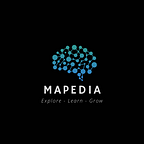The Issues with “Traditional” Education in 2022
We are living in the Information Era. Whether the powers associated with mass, readily available knowledge are used for the greater growth and education of civilisation or not, the simple fact remains - any topic can be taught and learned given the right conditions. That being said, we find ourselves raising children within the same shell generated ages ago during the birth of the traditional education system. While this system was seen as quite innovative at this time, a LOT has changed since then. Society has developed, industry growth has shifted, and the individuals that make up the “learning class” have new needs, desires, and reasons for knowledge growth.
Given the new specs of today’s classrooms, here are what we find to be the major issues with education in 2022.
A one size fits all approach.
We all come from different backgrounds of widely different experiences and require unique tools and processes to learn. The traditional education system essentially takes a bell-curved approach to learning that only accomplishes its goal for a narrow margin of students, leaving the rest behind.
Aside from students having various learning preferences, students also have various material preferences and inclinations. However, traditional education systems (although slowly adapting) continue to emphasise and value the typical curriculum of math, science, language, and history. The room for more technical or creative learning paths is diminished by this nature, leaving all students trapped within the same bounds of knowledge.
Students need more.
The lack of resources traditional systems have access to is usually centralised and quite limited. While the top 5% of institutions are able to compensate through large sums of external investments, the remaining 95% are left struggling to support their students. Most programs lack the appropriate amount of personnel and funding, which typically leads to single stream content overload that only a small percent of students are able to grasp onto.
Beyond the pains that students endure due to this structure, teachers also find themselves stuck in the same predicament. While instructors attempt to go above and beyond to train the students assigned to them, they are only able to work with the resources allocated. This leaves teachers lacking the appropriate learning materials and resources needed to support the demands that come with large classrooms of students with very diverse needs.
Access, Access, Access.
Over the years, traditional education has become more and more catered to those who are willing and able to pay a significant sum of money to partake in formal learning. While this applies specifically to higher education, the issue can be seen on all levels of the spectrum. In this current state, the system is only accessible to those who are fortunate enough to make it through the funnel, leaving the rest of the learning population to fend for themselves.
Continuous learning.
In many cases, traditional education (spending a few years learning skills at the beginning of one’s career) is no longer adapted to the reality of the job market. The need for certain specific roles in the market can become oversaturated, while other positions struggle to be filled. Given this logic, the required skills for certain positions might as well evolve simultaneously, moving further away from a Push to Pull education style. This pushes for a more flexible, adaptable and continuous education. Core skills such as communication, collaboration or creative problem solving remain primordial, while specialised skills and knowledge must be obtainable on demand.
Summary — What’s Next?
As every industry is being forced to adapt to the rapidly evolving working world, the traditional education sector will need to follow suit to keep up with the new market and the large online tech players. Highly accessible, individually tailored education that teaches motivated learners what they need to thrive could be the future of this outdated system.
Stay tuned and follow our newsletter as we continue to discuss the education sector and how we plan to change the way people learn. 🧠
Follow the journey at Mapedia.org to see how leveraging data, a graph database, and the wisdom of the crowd can re-shape how the world uses educational resources to explore, learn, grow.
